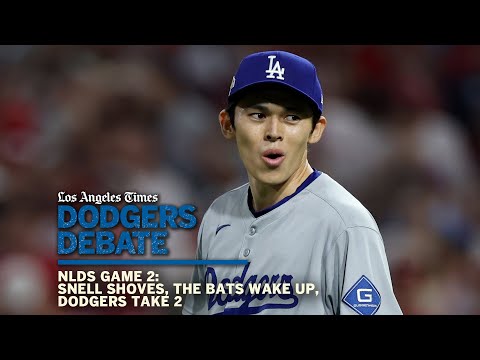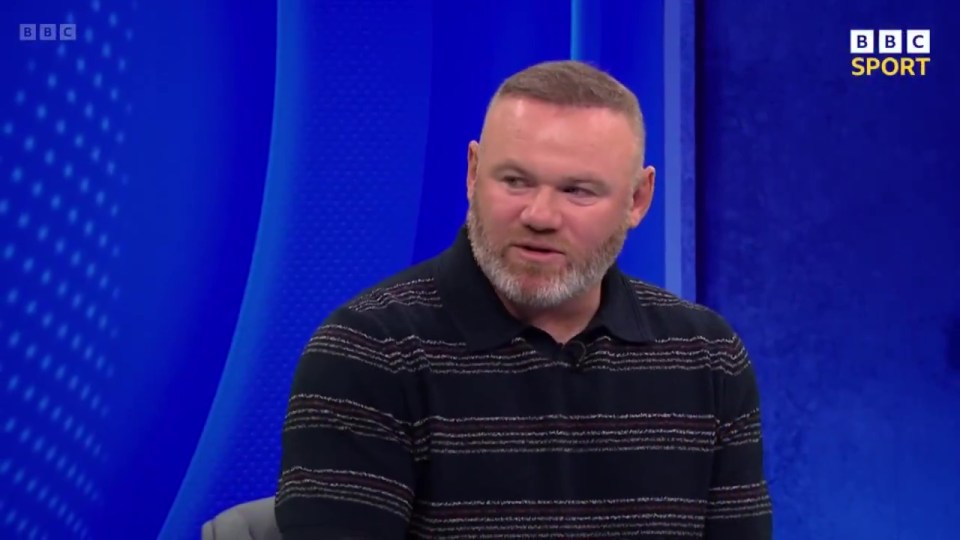Dodgers: Why didn’t Dave Roberts use Roki Sasaki earlier in Game 2?
Dodgers manager Dave Roberts was trying to play the long game Monday night.
Which is why, when his team entered the ninth inning with a three-run lead in Game 2 of the National League Division Series, he gave the save opportunity to Blake Treinen instead of Roki Sasaki.
If all things had been equal, it’s likely that Roberts would have turned to Sasaki to start the inning. In just two weeks since returning from a shoulder injury and being moved to the bullpen, the converted rookie starter has become the club’s most dominant relief option.
But, for as much of a revelation as the 23-year-old right-hander had been in that time — posting four scoreless outings with a 100-mph fastball and unhittable splitter — the team remained conscientious about managing Sasaki’s workload, which included one appearance in Game 2 of the wild card series, then another in Game 1 of the NLDS just days prior.
Thus, with Roberts feeling confident enough in Treinen (the veteran right-hander coming off a career-worst season but also some recently improved outings) to protect a three-run cushion that felt relatively comfortable, he left Sasaki sitting in the bullpen despite the save situation.
He tried to take advantage of an opportunity to give his ace reliever rest.
“He hasn’t gone two out of three [days] much at all,” Roberts said after the game. “So I didn’t want to just kind of preemptively put him in there. I felt good with who we had.”
That plan, of course, almost backfired in disastrous fashion. Treinen gave up two runs without retiring a batter. Alex Vesia needed his defense to turn a wheel play on a Bryson Stott bunt to limit the damage from there. And in the end, Sasaki entered the game anyway to record the final out.
Moving forward, Roberts confirmed on Tuesday, Sasaki is “definitely the primary option now” for any future save situations — the closest the team will come to calling him their outright closer, since they could also choose to use him in high-leverage spots before the ninth.
“Obviously what Roki has done, has continued to show, has been very encouraging on a lot of fronts,” Roberts said.
The question, however, remains exactly how hard the Dodgers can ride him the rest of these playoffs; and how delicately they’ll have to balance the burden they place on a young pitcher who has never before pitched in a relief role.
“He’s not going to close every game, it’s just not feasible,” Roberts said Tuesday. “This is something he’s never done. And you’re expecting to go a few more weeks [in the postseason]. So all that stuff has to play in, that a lot of people don’t have any appreciation for.”
The deeper the Dodgers go in the playoffs, the more tricky this calculus will get.

For now, the team’s preference would be for Sasaki to have at least one day of rest before each of his outings. And while Roberts didn’t rule out using him back-to-back days, he described it as “the next graduation point” for the offseason Japanese signing (who had made only eight MLB starts at the beginning of the season before initially getting hurt and missing the next four months).
“There’s no guarantee what the stuff’s going to be like [in a back-to-back sequence],” Roberts said, adding that any potential usage of Saskai on consecutive days would require conversations beforehand with pitching coaches about how Sasaki looked in pregame catch sessions.
“I would love to have Roki throw every single day if he could, but that’s just not feasible,” Roberts reiterated. “Again, we have a lot of conversations, and then I make my decision.”
In other words, Sasaki will get the majority of save opportunities moving forward. But he likely won’t be the only one to handle such spots.
Sheehan responds in set-up role
Emmet Sheehan reacts after closing out the eighth inning against the Phillies in Game 2.
(Robert Gauthier/Los Angeles Times)
After a promising regular season in which he posted a 2.82 ERA in 15 outings, the Dodgers looked to Emmet Sheehan to be a multi-inning set-up man for their beleaguered relief corps.
His first playoff outing was troublesome: Giving up two hits and two walks while recording only one out in Game 2 of the wild-card series against the Reds.
But on Monday night, he bounced back with two innings of one-run relief to keep the Dodgers’ lead intact entering the ninth.
The biggest moment of Sheehan’s outing (in which he retired the side in the seventh, before giving up a down-the-line triple to Max Kepler and RBI single to Trea Turner in the eighth) came after he’d yielded that lone run. The Phillies had left-handed sluggers Kyle Schwarber and Bryce Harper due up next. The Dodgers had Vesia, their top left-handed option, warming in the bullpen.
For a brief moment, as pitching coach Mark Prior came to the mound and Sheehan fidgeted with his PitchCom device during an extended pause, it appeared the Dodgers were just stalling for Vesia to get warm.
But Roberts ultimately stayed put and let Sheehan pitch to the Phillies’ star duo. His faith was rewarded with two outs that ended the inning. Sheehan struck out Schwarber with a 97.6-mph fastball on the inside corner, tied for his third-hardest pitch for a strikeout this season. Then he got Harper to fly out on a changeup, pumping a fist into his mitt as he skipped off the field.
“I think it just showed some adjustments that I made compared to that previous game [against the Reds],” Sheehan said.
The biggest one?
“Definitely controlling your emotions,” Sheehan acknowledged. “It’s a big piece of coming out of the bullpen. I’ve talked to a lot of guys about that, especially after Cincinnati where I wasn’t as comfortable out there.”
That Reds outing, of course, was a major red flag for the Dodgers’ bullpen plans. Given the struggles from the team’s traditional relievers entering the playoffs, Sheehan was supposed to essentially be a set-up man out of the bullpen capable of bridging the gap from the starting pitcher to the ninth.
Sheehan said, in that wild-card outing, he felt he was “trying to do a little too much, trying to be a little too fine with my pitches at the corners.”
“That’s not really my game,” he said in hindsight. “So I think just getting back to the approach and the game plan that’s been working for the past couple months was big. Trying to just go right at them and attack in the zone.”
Roberts gave Sheehan the leash to do that Monday, and will likely keep calling upon him in high-leverage spots moving forward, perhaps making Sheehan and Sasaki his preferred combination to close out the final innings of games.
“I just felt that his stuff was still real good [and that] he wasn’t going to run from those guys at the top,” Roberts said Tuesday of letting Sheehan face Schwarber and Harper (who are a combined one for 14 in the NLDS with two walks and eight strikeouts).
“I trusted him. I felt in that moment he was the best option. And it proved to be right.”
Treinen lacking ‘edge’
At the other end of the reliever trust spectrum is Treinen, who not only failed to retire any of the three batters he faced in Game 2 but also, at least in Roberts’ estimation, also didn’t look like someone confident in their stuff.
“I just didn’t see that edge last night,” Roberts said Tuesday, “that I know I’ve seen it many times over.”
Indeed, Treinen was the Dodgers’ most trusted reliever during their World Series run last year, when he was credited with three saves, two holds and two wins and punctuated his October with 2 ⅓ scoreless innings of relief in Game 5 of the World Series.
This season has been a different story, with Treinen stumbling to a career-worst 5.40 ERA after missing much of the first half with a forearm problem.
Despite that, Treinen had entered Monday on more of a high, after striking out three batters in his regular-season finale before making two scoreless appearances in the wild-card series.
The Phillies, however, took advantage of his inability this year to get as much swing-and-miss, fanning on just one of eight swings while stringing together a single and two doubles (the last one on a half-swing from Nick Castellanos against Treinen’s trademark sweeper).
“I felt that he was getting some momentum before that last one, so I’ll check in on him,” Roberts said. “But there’s ways of how you go about an outing, successful or not successful, and how a player carries himself matters to me.”
On Monday, Treinen didn’t check that box. And whether he will be thrown into such a high-leverage situation his next time out remains to be seen.







